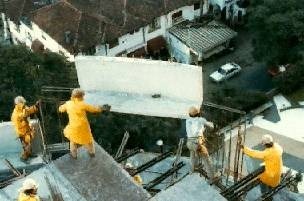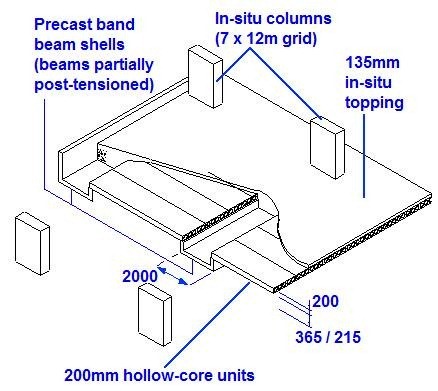
PERMANENT FORM WORK METHOD FOR
BEAM CONSTRUCTION
Permanent formwork construction method is used to:
- Speed construction, especially of downstand beams
- Provide high-quality finishes
- Promote low tolerances.
The units can act solely as permanent formwork, i.e. they may be designed for construction loads only without contributing to the strength of the completed beams.
More efficiently, they can act compositely with the in-situ concrete. Indeed some beams, particularly in seismic areas are designed to act both compositely and non-compositely in the same span.
Non-Composite Permanent Formwork:
Non-composite precast permanent formwork is used to speed the erection process and assure quality finish. This is particularly useful on exposed spandrel beams which require specialized finishes or profiles. Polystyrene void formers can be introduced into rectangular sections to reduce self weight.
The above units can be used in the main elevations supported by trestles and column formwork used in the curved elevation.
Composite Permanent Formwork:
Beam shells perform number of functions:
- They are generally designed to support precast floor units and construction loads
- To act as formwork for infill in-situ concrete
- To act compositely with the in-situ infill to support permanent loads.
Their most common use is to form downstand beams. The units are usually in a U-form. The units may be reinforced or prestressed and once concreted, may be post-tensioned. Thin plain sections may incorporate lattice girders for temporary rigidity and to support construction loads.
Precast beam shells were chosen for speed of construction and quality of finish. The shells were made from grade 60 concrete and were placed at 7m centres to support hollowcore floor units.
Once supplementary reinforcement and tendons had been fixed, the shells and floor units were concreted with a grade 40 mix. The composite beams and floors were subsequently post-tensioned to obviate cracks. A four-day cycle was achieved.



